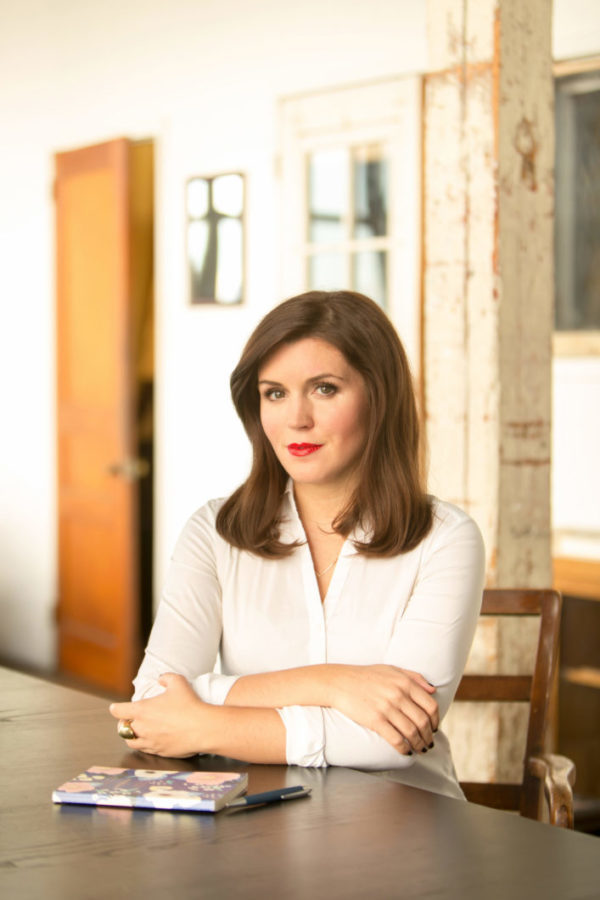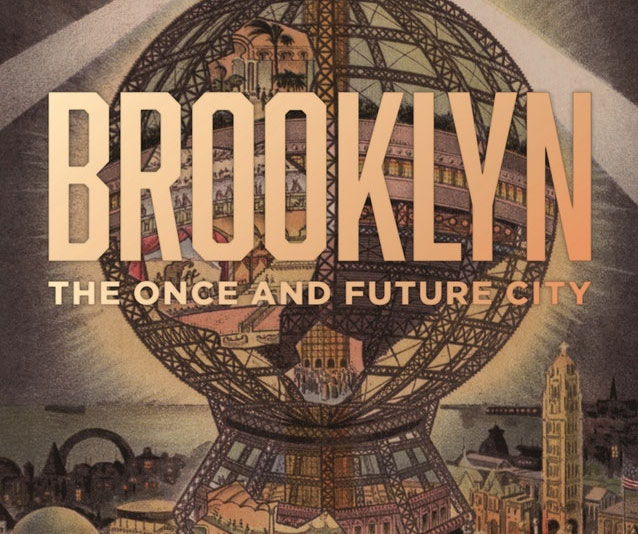
Remember when you could live in Williamsburg for just $300 per month? ..or when you needed friends to accompany you on Bedford Ave? It’s hard to imagine that Williamsburg was once devoid of overpriced boutiques, tourists, and, of course, hipsters. But Robert Anasi, author of soon-to-be-published The Last Bohemia: Scenes from the Life of Williamsburg, Brooklyn, has journals filled with fascinating details on this Williamsburg of the ’90s. He speaks to us about his favorite bar-café then and now, and offers his take on the Williamsburg that exists today.
You lived in Williamsburg for 15 years, beginning in the early ’90s. As you describe in your book, the neighborhood was a very different place back then. How would you feel about living in Williamsburg as it is today?
As a long-time New Yorker, I’m completely pragmatic about where I live. Give me a couple of thousand square feet, cheap rent and a waterfront view, and I’d be more than happy to live in Bburg. Of course, there are many different Williamsburgs: the Northside, the Southside, the East Williamsburg that developers and real estate agents will extend as far into Bushwick as their shamelessness takes them. I lived on the Northside though, so if you’re offering me a penthouse at ‘The Edge’, well, sign me up. But I wouldn’t ‘live’ there. Real life would go on somewhere else. What you have on Kent Avenue these days is a facsimile of life in a space as bland and homogenized and utterly without character as a Houston mega- mall. Fortunately in NYC, something better is still usually just a subway ride away. The Northside is a tourist playpen, a bohemian theme park for college kids and folks with too much money. There’s still a shadow community underneath this mass – artists and musicians and writers, but they’re completely buried beneath the avalanche. What people hope to find on Bedford Avenue has nothing to do with the fact that you can drop three hundred dollars on artisanal cheeses made from the perfumed sweat of miniature Himalayan goats. The same kind of movement has happened in every hip NYC neighborhood from Greenwich Village to Bushwick – people want to experience something different from mainstream America but instead of trying to change where they live, they flock to a place like Williamsburg; while at the same time expressing nothing but contempt for that Williamsburg icon, the hipster. Hipsters are simulacra of artists, a new kind of cowboy in American society, except people want to be cowboys without the inconvenience of hard work and low pay; they just want the boots, the hat and the six-gun. That’s the hipster: the gilded pose of an artist that crumbles when you pick it up.
Are you still in touch with old friends and neighbors from Williamsburg? Are any of them still living there, and if so, would you say that there is any consensus about the relative cost/benefit of Williamsburg becoming so attractive?
I still have plenty of friends in Williamsburg. People who work there or who live in rent-stabilized apartments and can’t afford to leave, or both. Esther Bell, who I profile in the book, owns the West Café on Union and lives on Bushwick Ave. The reality of Williamsburg is that, as soon as you move away from the Northside and the water, it’s still a very working-class, ethnic neighborhood. So at those edges, the new Bburg of international finance and disgusting wealth rubs up against various of the old Williamsburgs – hence the conflicts over the public schools and the yelling and screaming about a couple of scuffles in McCarren Pool. Esther’s bar-café is really a beautiful spot – there’s even a beer waterfall – and a lot of her business depends on the customers from the condos they’ve built along Union. But three blocks further up Union there’s low-income housing and a solidly Dominican world. To the world at large, Williamsburg means ‘hipster’, in the same way that LA means Hollywood. But if you wander a few blocks off the beaten path in Williamsburg, you’re in for a surprise. How does someone like Esther feel about the trade-offs? I guess she’s happy that her business is doing well, and she has a clientele. There’s also still enough left of the old neighborhood that she can go out on a Friday night to an opening or a bar and run into people she knows. It will never again be this small community with two degrees of separation but having had that in NYC in the first place was a kind of miracle.
When you lived in Williamsburg, did you feel it was a particularly exciting community in which to be a writer? Do you have any sense of what it would be like for writers living/working there today?
It might be due to the fact that I’m slow-witted, but in Williamsburg in the 90s I never found myself thinking, ‘This is a fantastic place to be a writer! There are so many interesting people here!’ I only notice things when they’re gone. Yet at the same time, I was constantly writing down fascinating details: from the waterfront, the coke bar, McCarren Park. At the L Café in the 1995, I’d run into fortune-tellers, firemen, bums, Cuban exiles, and a lot of hungry artists [Note to young writers: keep those journals! More than half of my material is drawn from fifteen years of journals, stories that I would have lost or misremembered]. For young writers today I’m sure there’s plenty to write about, after all, Bedford Ave is a 24-hour freak parade. The place I loved is dead and decomposing, but that’s not to say you can’t find all kinds of material. Despite Bloomberg’s attempts to turn NYC into a gated community, it’s still one of the most fascinating and diverse places in the world.
Have you lived elsewhere in Brooklyn? If you returned to New York today, where would you choose to live?
My first Brooklyn apartment was on the Bed-Stuy/Fort Greene border back in 1990, right on Myrtle and Clinton. I paid $290 a month for a little room over a yard that held some kind of chop shop. All day and night you’d heard the screech of metal as they shredded cars. In 1990 that was not an easy place to be a skinny white kid – I got jumped a couple of times and also got into a fistfight at the Clinton-Washington stop when a stoned teenager started yelling about how I killed Yusuf Hawkins. It  was a different city back then. The rich want us to believe that our only options are luxury condos or ‘The Bronx is burning’ but there has to be a way to make this city affordable for working class and middle-class people. For Bloomberg ‘middle-class’ means a millionaire, but that’s not what I’m talking about. If I came back to Brooklyn, I’d have to live a little further out: Ridgewood, Bushwick are interesting, it’s hard to say what I could afford. I’m too old to share a railroad apartment with five other people.
was a different city back then. The rich want us to believe that our only options are luxury condos or ‘The Bronx is burning’ but there has to be a way to make this city affordable for working class and middle-class people. For Bloomberg ‘middle-class’ means a millionaire, but that’s not what I’m talking about. If I came back to Brooklyn, I’d have to live a little further out: Ridgewood, Bushwick are interesting, it’s hard to say what I could afford. I’m too old to share a railroad apartment with five other people.
The Last Bohemia: Scenes from the Life of Williamsburg, Brooklyn will be published next Tuesday, August 14, and Anasi will be appearing twice in Brooklyn that week. You can catch him on August 14th at WORD (located at 126 Franklin Street in Greenpoint), and on August 16 at Spoonbill & Sugartown (located at 218 Bedford Avenue in Williamsburg.) Both readings are at 7pm.


